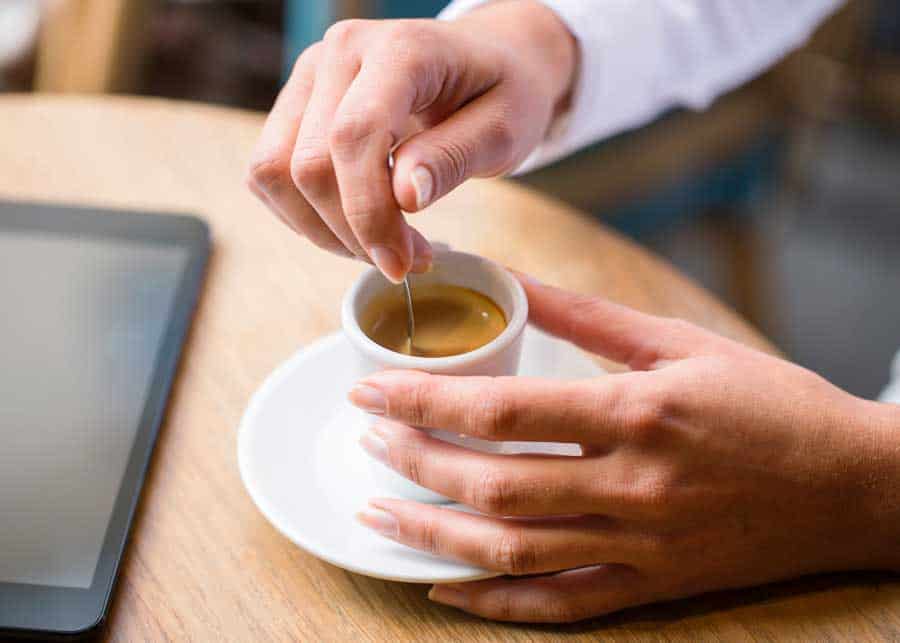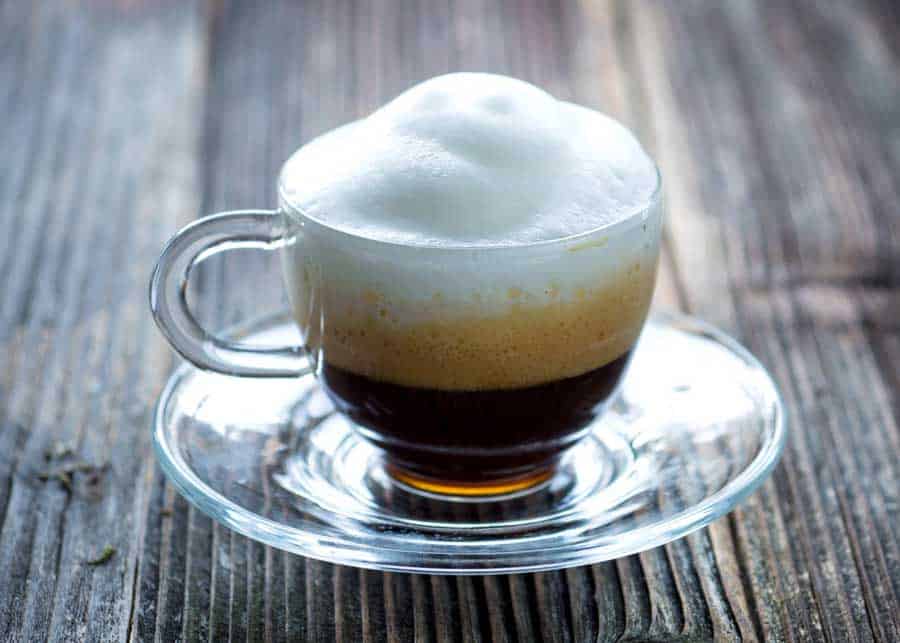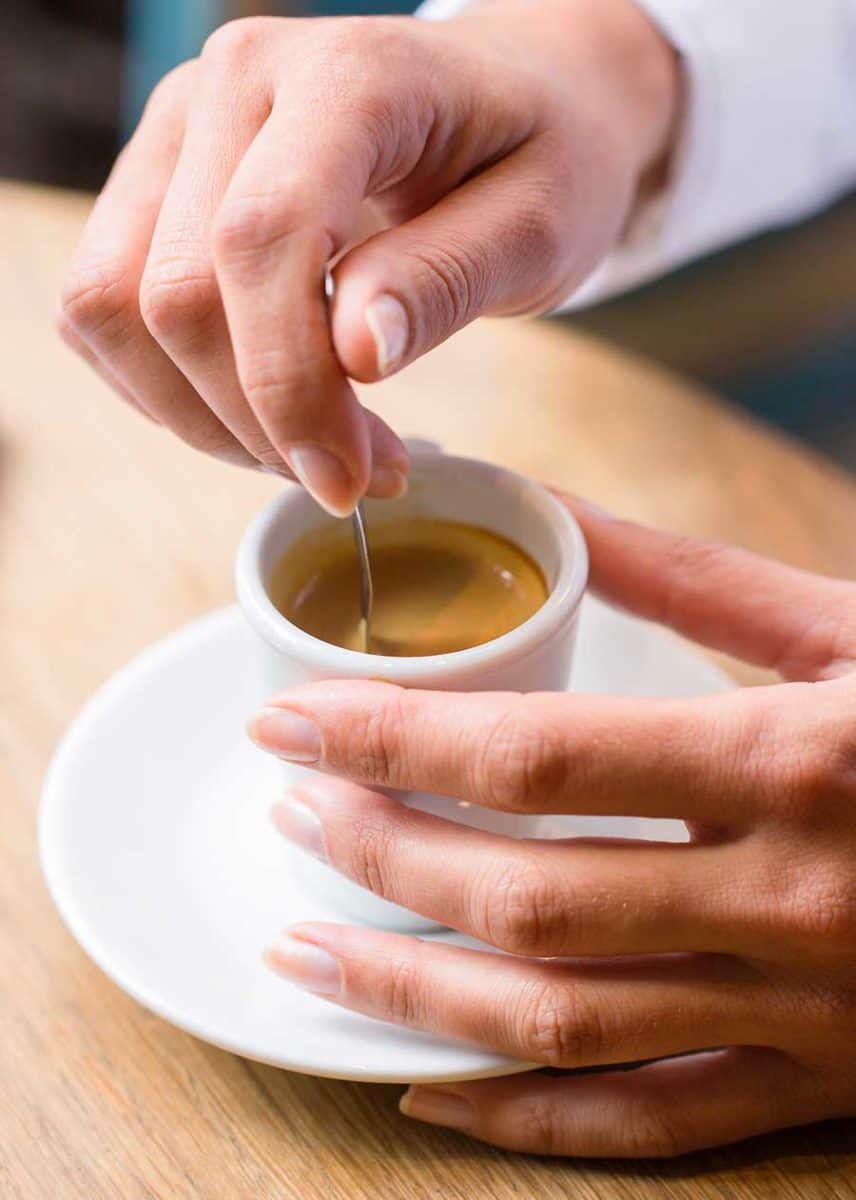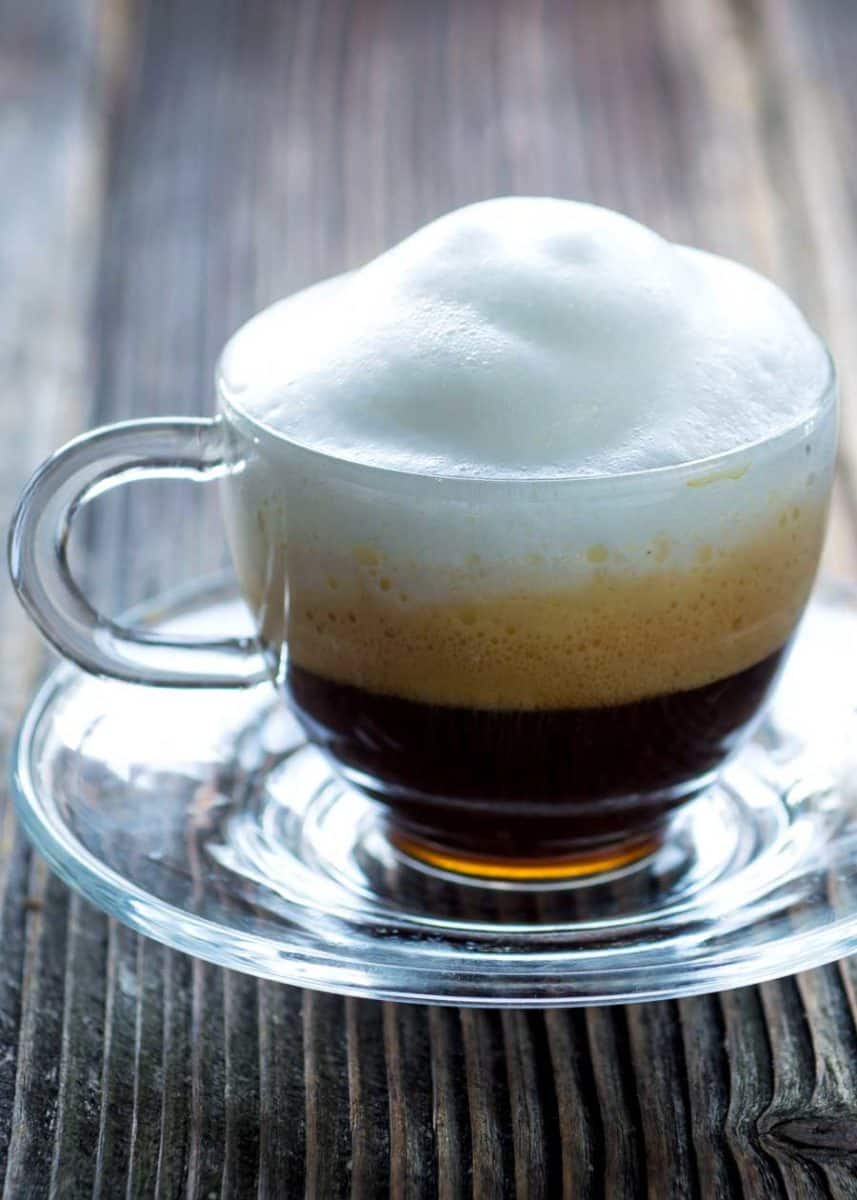When you stop by your local cafe, there are so many drink options that you might feel overwhelmed. Most types of coffee include espresso. Here are 3 key differences between espresso vs cappuccino.
An espresso is concentrated coffee made using pressurized hot water. They are served in small cups (single or double). Cappuccinos are espresso-based drinks with distinct layers of espresso, steamed milk, and foam. A cappuccino comes in many sizes but is always larger than an espresso.
Espresso has a robust, bitter flavor, while cappuccinos have a smooth, velvety flavor. An espresso drink has around 5 calories per serving, while cappuccinos have around 80 calories.

This post is part of a series comparing popular types of coffee. Curious to try something new? See our guide to 79 Types of Coffee.
Table of Contents
What is Espresso?
The word espresso is an Italian word that refers to the method of brewing coffee. Hot water is forced through finely-ground coffee using pressure. It produces a thick, concentrated liquid that can be consumed on its own or added to other drinks.
This life-giving liquid is composed of three equally important parts: the heart, the body, and the crema. Most coffee shops will use a dark roast coffee bean for their espresso.

What is a Cappuccino?
The name cappuccino comes from the Capuchin monks of Vienna, who wore brown robes that are the same color as a cappuccino. The actual drink originates from Italy.
A cappuccino is a beverage made by combining shots of espresso, steamed milk, and foam. The proper cappuccino ratio of these ingredients should be 1:1:1.
Cappuccinos didn’t become popular in the United States until the 1980s, so people perceive them as a newer drink.
They are much older than you may think and have a unique, rich history.

3 Key Differences: Espresso vs Cappuccino
There is a lot of overlap between espresso and cappuccinos, because cappuccinos are an espresso-based drink. But, they aren’t the same in every way.
Here are some of the key differences between them.
1. Size of Espresso Compared to Cappuccino
Espresso is a small, concentrated liquid. It comes in regulated quantities called “shots.”
A shot of espresso should be one fluid ounce, and two shots of espresso should be two fluid ounces. Either of these beverages will fit in a small cup.
Cappuccinos have some size variation but always have a greater serving size than espresso. Cappuccinos maintain a ratio between espresso, steamed milk, and foam.
Based on its 1:1:1 ratio, a small cappuccino with one shot will be three ounces, and a cappuccino with two will be six ounces.
You’ll find beverages that have a ratio of 1:2:2 or even higher, which will result in more liquid in your cup. No matter where you go, though, a cappuccino will always come in a larger size than an espresso.
Learn more: How many ounces in a cup of coffee? 17 Sizes Compared

2. Taste: Cappuccino vs Espresso
The main difference in taste is a result of one beverage having steamed milk and foam on top and the other having crema on top. We could get into the distinct notes of each kind of espresso bean, but we’d be here all day.
Espresso on its own has a robust, bitter flavor, while cappuccinos have a velvety, smooth flavor. The espresso’s flavor is still present in a cappuccino, but its flavor will be mellowed by the addition of milk. If you use alternative milk like soy or oat, you’ll get a different experience.
A cappuccino can also be described as “wet” or “dry” due to the amount of steamed milk and foam. Ordering a wet cappuccino means you’ll have more steamed milk than foam, dry means you’ll have more foam than steamed milk.
You can even request your cappuccino be extra dry, and the barista will prepare it with more foam than usual.
3. Healthiness: Calories and Caffeine
As far as coffee drinks go, neither espresso nor cappuccinos are unhealthy options. You get a lot of energy from both for a few calories. There is some variation between them, though.
A shot of espresso has 5 calories, and a typical cappuccino has around 80 calories.
The number of calories in a cappuccino change depending on the size, the milk used to make it, and if you add sugar. For example, a small cappuccino from Starbucks with plain milk and no added sugar has 100 calories.
As a cappuccino is made with espresso, both beverages have comparable amounts of caffeine.
- There is 63 mg of caffeine in a single shot of espresso.
- If your cappuccino only has one shot, it’ll have the same amount. Some places add two shots of espresso by default, though.

More reading: How Many Cups of Coffee in a Pound? Chart of 6 Brew Methods
Which is Better?
There’s no simple answer to this question because it depends on what you like. So, the best way to find out which is better is to try both of them.
To get the best experience possible, you should try them both as freshly as possible. Hot beverages are best served hot anyway, and espresso dies quickly.
If you’re a new coffee drinker, you might consider starting with a cappuccino. Espressos have a strong, bitter flavor and are more of an acquired taste. But if you’re like me, and millions of espresso lovers, you might love espresso from your first shot.
One isn’t better than the other. So, you may be surprised by which you prefer.
Here’s how to make an espresso.
Final Thoughts
After reading all of this, you may be wondering if there’s a point in treating espresso and cappuccino as separate drinks. You aren’t wrong for wondering that.
Going into so much detail about some of their key differences just helps you better figure out what you want to drink. You can learn about the differences between other drinks and get even closer to finding the perfect drink for you.
Which do you prefer? Have you tried both? Do you prefer cappuccino or espresso?
- About the Author
- Latest Posts
Dena Haines is a co-founder and blogger on EnjoyJava – and is working to make it the best coffee blog in the world.
She also blogs about travel at Storyteller.Travel and photography at Storyteller Tech. Dena is a partner at Storyteller Media, a publishing company she started with her husband, Bryan.
